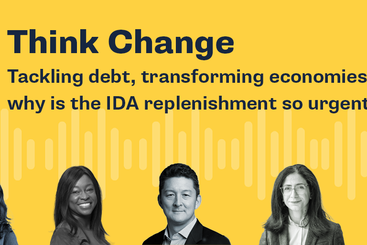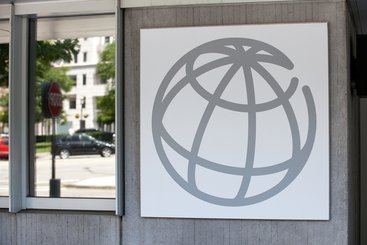After seven days in Washington D.C., nearly 100,000 steps on my pedometer, and an unspecified number of meetings and discussions, how would I recount what happened (and didn’t happen) at this year’s World Bank Spring Meetings?
1. The debate on the reform agenda of multilateral development banks (MDBs) is shifting from challenges to delivering solutions.
This Spring Meeting marked concrete steps for the World Bank from a vision to ‘eradicate poverty on a liveable planet,’ agreed upon at the Annual Meetings in Marrakech in October 2023, to implement its new strategic direction, the Evolution Roadmap.
- World Bank Management has developed the framework of the new corporate scorecard. It reflects a new vision for the World Bank and better aligns projects and programmes with their results. For the first time, the scorecard has been simplified and designed as one across the World Bank Group, both public and private sector operations. The real litmus test will be the specific indicators to be piloted and developed in the next few months.
- The World Bank is expected to generate an additional $70 billion of lending in the next ten years thanks to a combination of innovative financing mechanisms towards a portfolio Guarantee Platform, a hybrid capital mechanism, and a new Liveable Planet announced by 11 shareholders for a total of $11 billion. These contributions respond to the proposals of the G20 Expert Panel on MDB capital adequacy framework in 2022 to use innovative instruments to maximise the lending potential of these institutions. While every contribution counts, these figures are not enough to achieve the goal of tripling the MDBs' finances – including the World Bank – by 2030, as the G20 Independent Expert Group on Strengthening MDBs urged. Discussions on a much-needed general capital increase were muted.
- The World Bank is delivering faster to its clients, under the principle of not affecting the quality of projects and its high safeguard standards. Last year, it took 19 months for the Board to approve a project since a first idea was proposed. Just before the Spring Meetings, President Banga announced this length has already been cut by two months. The goal for next year is to shorten it to a year. Thus far, much of the actions have focused on the side of the World Bank, reducing duplications and inefficiencies. Streamlining processes requires all hands on deck not only of World Bank management but also of client country officials to boost their project implementation and financial management capacity, ultimately building robust country systems that the World Bank can rely on. Right now, it is difficult to judge whether the progress achieved is enough, given the complexity of the task ahead and the number of actors involved.
2. MDBs are serious about coordination and cooperation.
MDBs can be more than the sum of their parts and can reduce transaction costs for client countries if they coordinate and cooperate more closely both at the global and the country level. The G20 IEG expert group on strengthening MDBs reiterated how MDBs should share diagnostic tools, mutually recognise standards, set up shared co-financing, and project preparation platforms; pool risks, create common asset classes and learn from each other in the dialogue with credit rating agencies.
In Marrakech in October 2023, MDB Heads announced a joint plan of action. In a first-time MDB Heads retreat, the View Point Paper issued at the end of the Spring Meetings this year elaborates on this plan and takes it forward with some key deliverables for 2024 in five areas, including scaling up MDB financing and strengthening country-level collaboration and co-financing. This is a much welcome start, including the launch of a database and platform outlining project pipelines across MDBs and discussing co-financing opportunities at the Spring Meetings. But there is more work to be done to further incentivise MDB collaboration both at the global and country level on many other fronts – e.g. on shared diagnostics and mutual recognition of standards.
3. The IDA21 replenishment is still very much in progress – and open to solutions.
The second replenishment meeting took place, as usual, around the Spring Meetings. It does not typically discuss the financial package of IDA (International Development Association) or its total volume, which is the main item on the agenda of the third replenishment in June – and focuses on the policy priorities that IDA will deliver.
After the replenishment meeting, discussions on the ‘policy package’ are still ongoing. The ambitious IDA replenishment that the World Bank management was looking for is now described as ‘robust,’ and it has recently downscaled to reach the $100 billion mark. That would be a 7.5% increase on a three-year basis from IDA20. That is way less than the inflation rate that prevailed in many countries. While we are not where the discussions of the IDA21 replenishment should be, now is the time for bold ideas and solutions to boost funding to IDA and its impact.
4. The pace of reform should be much faster.
While progress has been made on several fronts – including on how to recognise callable capital – the overall reform agenda of MDBs is not keeping up pace in many areas. Progress should be tracked over time to not lose momentum, as well as the wealth of ideas and recommendations to expand the lending capacity and impact of these institutions, individually and collectively. In the week of the Spring Meetings, the announcement of the Brazilian Presidency of the G20 of a G20-owned ‘MDB Roadmap’ as a deliverable of their Presidency in October goes precisely towards this direction to keep the pace and commitments of the MDB reform agenda across G20 Presidencies.
The Springs Meetings represented a moment and a space for the World Bank, MDBs and their shareholders to demonstrate that progress is happening. But the stocktake of the G20 Independent Experts Group on strengthening MDBs just released before the Spring Meetings could not have captured the status of the agenda better than this:
‘While there is room to disagree on whether the glass of MDB reform is half-full or half-empty, what is important is the size of the glass. Our overall assessment is that the glass is still much too small.’



